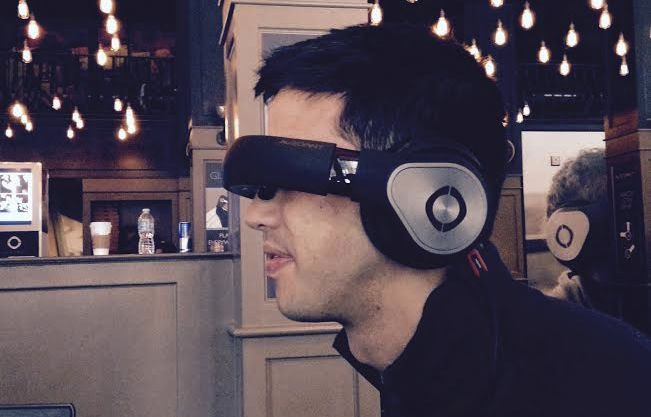SXSW 2015: Avegant Glyph A VR Headset That Doesn’t Make You Look Like A ‘Glasshole’

AUSTIN, Texas -- Coolness, or rather the lack thereof, is probably one of the reasons enthusiasm for Google Glass has largely vanished. It’s never a good sign when your product inspires a pejorative nickname before a consumer version of the thing ever makes it to market.
It remains to be seen if Glyph, the highly anticipated wearable from the California startup Avegant, will encounter similar headwinds when it becomes available to consumers later this year. But it has a few things working in its favor, not the least of which is a modicum of style. The multimedia head device has a sleek, orbicular design that evokes the best of retro sci-fi -- “Flash Gordon” by way of “Tron” by way of “RoboCop.” But when flipped up on the top of your head, the unit looks just like another set of noise-canceling headphones.
Are you a rabid gadget geek or just an everyday audiophile? Only your tech support guy will know for sure.
Edward Tang, Avegant’s co-founder and chief strategy officer, said the inconspicuous design was part of the plan. “From the ground up, we designed this product to look fashionable,” he told International Business Times at a trendy wine bar here, where attendees lined up Sunday to sample Glyph during the South by Southwest Interactive festival. “We allow users to have the ability to engage and disengage to watch a video. You wouldn't wear them walking down the street.”
Initially funded on Kickstarter, Glyph is essentially a pair of heavy-duty headphones with high-resolution LED displays built into the headband -- an imaginative design that seems an obvious step in headset evolution. Pulled down over your eyes, the unit becomes a portable, all-encompassing home theater system. It can be hooked up to your mobile device, computer or video game console. It’s not a virtual reality device, per se, but it can be used for VR games. The system has head-tracking software and 3D display capabilities, but unlike fully immersive VR units like the Oculus Rift, users can still look down and see their hands.
“It’s really great for augmented reality and larger field-of-view virtual reality,” Tang said.
So what does it feel like? We took the revised prototype for a test run Sunday and found it to be a transporting, at times intense experience, albeit one with structural hurdles. Having it pressed up against your nose, for example, is not the most comfortable sensation. The system is at its best when you’re watching big-budget Hollywood popcorn fare. I watched a frenetic fight scene from Marvel’s “The Avengers” and did not want to take it off.
Even more fun was hooking it up to a camera-mounted remote-control car and doing laps around the bar with a first-person view. Tang said you can do the same thing with drones, which I would loved to have seen if -- alas -- drones were not prohibited in the bar.
Glyph can feel claustrophobic if you’re using it in the company of other people. While it may not be fully immersive, it’s immersive enough that you will not be able to interact with, or even see, those around you, which makes it fundamentally different from watching content on a conventional screen.
That brings us back to the aforementioned Glass problem. Will Glyph users be seen as antisocial if they pop down the eyepiece and tune out in public? Tang, for one, said he thinks the product is in a good position as wearables edge their way into our world over the next few years. “Once people see the benefit or the value of it, they won’t feel like they’re doing something ridiculous.”
Christopher Zara is a senior writer who covers media and culture. News tips? Email me here. Follow me on Twitter @christopherzara.
© Copyright IBTimes 2025. All rights reserved.























